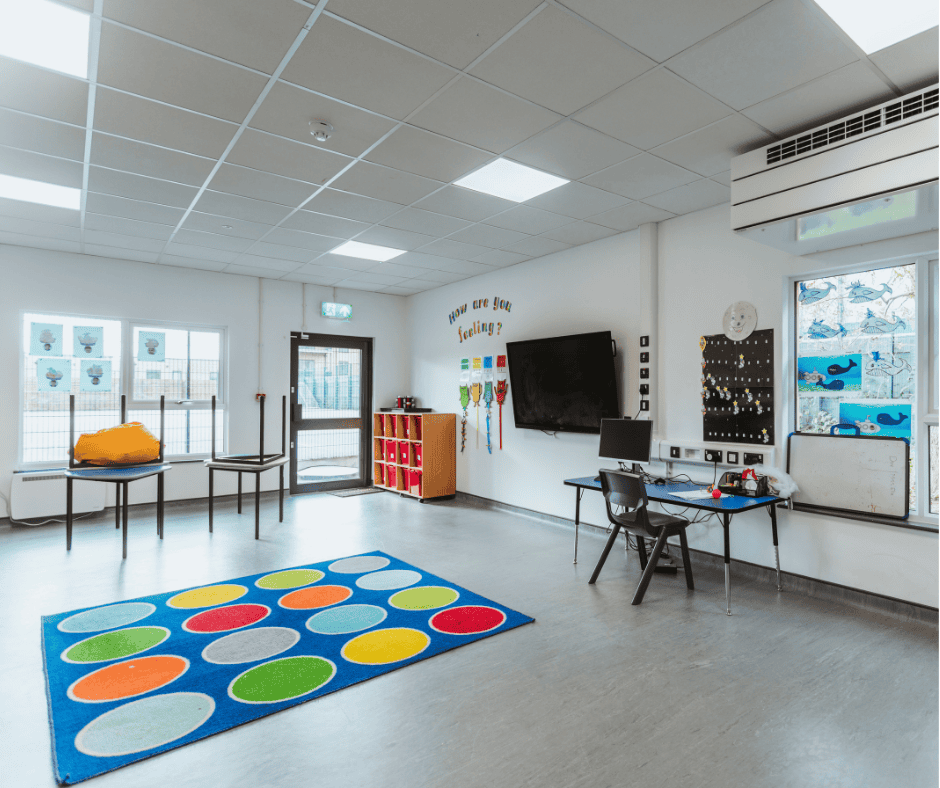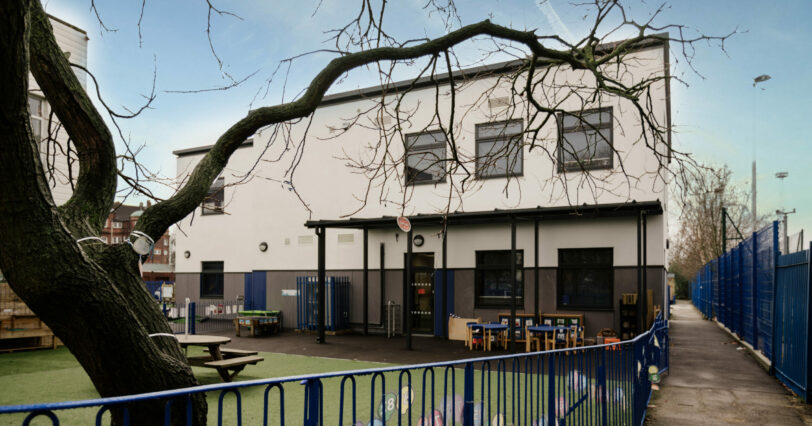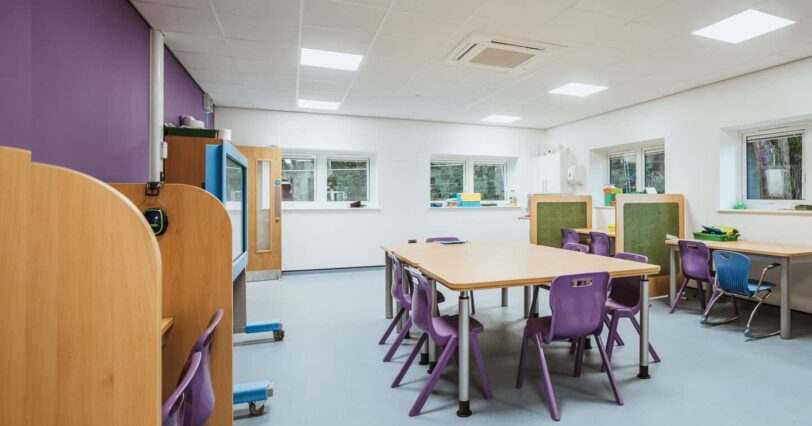Q: What is salutogenic design?
Hannah: “Salutogenic design reframes construction through the lens of health and wellbeing. It’s built on three key principles – comprehensibility, which looks at how the entire infrastructure is arranged and comes together, manageability, which focuses on maximising agency through adjustable features, and meaningfulness, which considers how design can promote a sense of familiarity and comfort.
“These are the building blocks of salutogenic design, but it shouldn’t be a simple ‘tick-box’ exercise. Instead, it’s about taking a holistic approach to design and creating spaces that make sense for those who will use them – a concept that is immensely valuable when applied to school estates.”
Q: What are some key features of this approach?
Hannah: “There are various features that can help integrate salutogenic design into buildings. Biophilic features, such as living walls, indoor plants and maximised natural light through large windows, can all have positive effects on wellbeing. Easy-to-read signs at eye level, along with different areas of the building distinguished by themes or colours, are also a great way to enhance familiarity and improve navigation around the school site.
“Noise reduction through acoustic panels, or soft furnishings to reduce echo, can help to improve focus in the classroom, enhancing the learning experience for students. Adjustable controls for both temperature and lighting can also incorporate the key salutogenic principle of manageability, allowing classrooms to remain flexible to individual needs.”
Q: What are the benefits of salutogenic design in school estates?
Hannah: “By reducing stress and anxiety through design, schools could enhance student concentration, engagement, and provide an overall better learning experience.
“Salutogenic design is also valuable when addressing the needs of SEND students, with adjustments aimed at reducing stress responses, helpful for reducing overwhelm and supporting emotional regulation in the classroom. In addition, the principle of manageability and adjustable design is especially important for pupils with SEND, as they often require a flexible learning environment that can be tailored to their needs.”
Q: How is salutogenic design being used currently?
Hannah: “While many schools incorporate elements of salutogenic design to an extent, adopting it as common practice moving forward holds the potential to create truly optimised estates.
“There’s certainly a greater national focus on the importance of mental health and wellbeing, particularly in the workplace. It’s important to recognise that schools are an equally important part of this; school estates designed with health and wellbeing at the forefront could not only lead to better learning experiences for students, but also improve staff retention, reducing the need for supply teachers.”
Q: How can schools successfully integrate salutogenic design?
Hannah: “While salutogenic design prioritises wellbeing, this also needs to be considered within the construction process. Modern methods of construction, or MMC, is a great way to incorporate salutogenics.
“As part of this, modular buildings can be a suitable option for many schools, allowing estates to have a designated hub that is centred around health and wellbeing. Modular units can also be used to offer temporary, semi-permanent and permanent spaces for learning ensuring that their estate planning is future proofed to potential change in future years.
“Building off-site means that estate managers can intentionally prioritise a more peaceful and rapid construction process, whilst actively keeping the school site free from excessive vehicles, debris and noise disruption.
“The adaptability offered by MMC and modular buildings allows schools to integrate salutogenic design, whilst ensuring estates remain flexible as their needs evolve. Making permanent decisions when re-configuring schools fails to consider how teaching will look in the future, whether a building will be required, or whether it may need to be re-located or adapted to new needs. MMC and modular buildings take these factors into account, keeping adaptability at the forefront without compromising on delivering high quality learning spaces. It’s important for schools to incorporate the salutogenic approach as a consistent focus to ensure it remains impactful over the long term, and MMC can help to ensure it remains a priority.”







